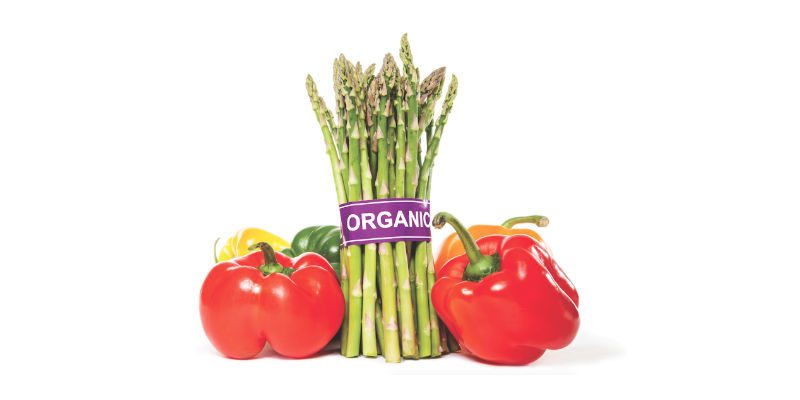
Becoming Certified Organic — It’s Not as Hard as You Think
Consumers are more interested in buying organic products than ever before — so much, in fact, that American consumer spending, according to the Organic Trade Association, exceeded $39 billion on organic foods in 2014. That’s right, billion with a B!
We all know the demand is there, but what is driving that consumer demand? An NPR-Thomson Reuters health poll showed that 36 percent of consumers polled are choosing to buy organic to support local farmers while 38 are concerned about toxins and chemicals in their food. Consumers clearly have concerns about artificial fertilizers and pesticides and the effect they have on the environment. In addition, people are concerned with what they put in their bodies, and more importantly what they put into their children’s bodies. The poll also emphasizes consumers are almost equally concerned about buying local.
Join the Movement
Well how do you tap into this market? One option is to grow market fruits and vegetables. There are plenty of growers jumping into this space. This is a way for growers to utilize greenhouse space in the winter or just supplement spring offerings. But, the most common way to access this lucrative organic wave is to grow finished containers destined for consumer’s gardens. Many consumers want to grow their own food at least as a novelty. According to the National Gardening Association, 35 percent of households in America are growing some of their own food, this is a 17 percent increase in five years. And Millennials are leading that charge with spending up to 63 percent in that same five years.
In many cases, a premium of 10 to 20 percent can be added on to the price of vegetable plants, fresh market produce or herbs just because they are labeled “organic.” But the access to USDA certified organic material is limited for end consumers. What is USDA organic certification? In the words of the USDA:
Organic certification verifies that your farm or handling facility complies with the USDA organic regulations. This certification allows you to sell, label and represent your products as organic. Most farms and businesses that grow, handle or process organic products must be certified. Certification allows you to call your product “organic” and to use the USDA seal.
This certification is required to label an item as “organic” and capitalize on these premium price points. In addition, this product draws a different type of consumer than the traditional gardener.
So here is where we insert the title of this article, becoming “certified organic” … it’s not as hard as you might think! Let’s keep things simple — below is your checklist for organic certification through the National Organic Program (NOP). From registration and inputs to equipment and harvests, these ten steps outline everything that finish growers need to earn organic certification.
1. Register as an organic producer with the department of agriculture within the state in which your operation is located. If your gross sales are greater than $5,000, you must also register with a second certifier. Visit the National Organic Program website for a list of USDA-accredited certifying agents.
2. Make a map that breaks down production areas into blocks that can be cross referenced with planting and harvesting records. It is very important that these maps are updated and that separation is maintained.
3. Verify that all inputs you use (fertilizers, plugs, seeds, pesticides, soil) are NOP compliant. This means they must be listed in one of the following:
4. Keep copies of receipts of all products purchased. This is very important because you can lose your certification just by using a product that you have not verified. This is the responsibility of the grower, not the certification company.
5. Verify that all plugs, young plants and seeds are certified organic, or you must be able to verify that they were grown according to the certified organic standards.
a. Keep accurate records of all plants.
b. Log greenhouse activities: transplanting, soil use, fertilizers, chemical applications, trimming, etc.
6. Pest control. Keep a record of all pest control methods and materials you use. Verify these inputs are NOP certified. For states with 100 percent reporting of pesticide use, you already have this.
7. Equipment. If you use equipment that was previously used in a non-organic area, or if you rent equipment, you must clean it and keep a record that it was cleaned before use in your organic production. This includes carts, tools, seeders, etc. In most cases, it is easier to maintain separate water systems, to ensure no nonorganic fertilizer, separate carts and separate tools and sprayers. In some cases you can box organic and nonorganic product together, as long as the organic product is on top.
8. Harvest. Maintain a log of all production and/or harvested products.
9. Maintain records of all sales. If there is a problem or question there must be traceability from shipping all the way back through your production cycle. A barcoding system facilitates this easily, but is not compulsory.
10. Make sure your labels are compliant with the NOP standards. Send proof to your certification company prior to printing.
As mentioned above, record keeping is the key to certification and also the yearly recertification. The certifying agent will review records and conduct an onsite inspection yearly before reissuing your organic certificate. Your production team must to be on board with the protocols, record keeping and everyone in the operation needs to understand the requirements in order to be successful.


 Video Library
Video Library 




















